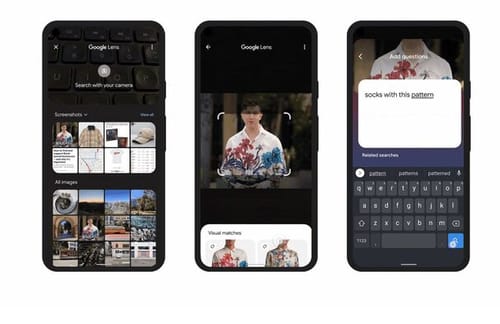 |
| Google Lens will soon search for both text and images |
Google is updating its visual search tool, Google Lens, with new AI-powered voice functions.
The update allows users to use text to further refine the search. For example, if you use Google Lens to take a picture of a cashmere shirt to find similar items online, you can add the "socks with this style" command to tag the clothes you're looking for.
The company has also introduced a new "Lens Mode" option on its iOS app, which allows users to search for any image they see when searching the Internet.
The company has also introduced Google Lens on PC in the Google Chrome browser so that while browsing the web, users can select any image or video to find visible search results without leaving the tab.
Read also: Google uses artificial intelligence in search results
These updates are part of the company's latest initiative to improve search tools using language understanding through artificial intelligence.
The Google Lens update is powered by a machine learning model that the company revealed at an I/O event called MUM earlier this year.
The company also introduced new artificial intelligence tools for web and mobile search.
The changes to Google Lens show that the company hasn't given up on this always-promising feature, but it looks more attractive as a new one.
Understanding Language from Google's Artificial Intelligence
Machine learning technology makes object and image recognition functions relatively simple at the most basic level. However, it requires some ingenuity on the part of the user to function properly.
However, people may get even more excited with Snapchat's recent update of its scanning feature, which works very similarly to Google Lens.
Google hopes to use these updates from Google's goal to turn the AI that's scanning the world into a more useful tool.
Give an example of a person trying to repair a bicycle. But I don't know what the rear wheel mechanism is called. Take a picture with Google Lens and add the search text "How to fix this". The results show that the mechanism is recognized as a “gearbox”, i.e. h. As a bicycle transmission system with a variable transmission ratio.
Like these demos, the examples provided by Google are simple and useful. However, you should try using the updated Google Lens to see if understanding the language of AI makes visual search more useful.
